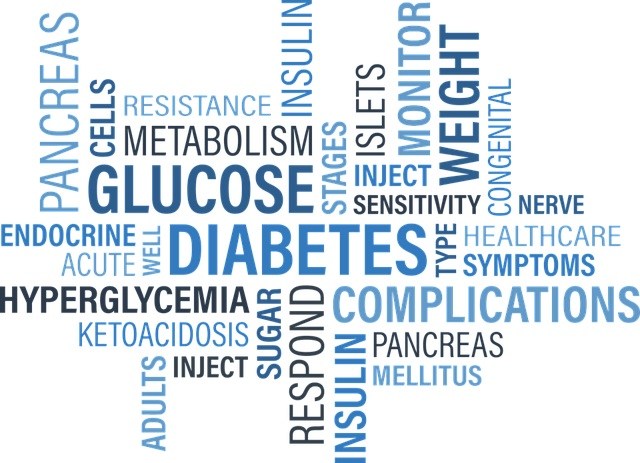How To Deal With Diabetes
Diabetes has become a lifestyle epidemic. Globally, the number of adults suffering from this disease has risen from 4.7% of the total population in 1980 to 8.5% in 2014, according to the World Health Organization (WHO). India ranks among the top 3 countries with a large diabetic population, according to a 2016 Lancet study. The number of cases rose from 11.9 million in 1980 to 64.5 million in India in 2014, up 50% among men and a whopping 80% among women, according to the Lancet data.
Diabetes is caused by the inefficient functioning of the hormone insulin, which helps the body’s cells convert glucose, derived from the food we eat, to energy. Insulin also helps the cells of muscles, and the liver among other organs, to absorb glucose from the bloodstream for daily metabolic activity.
The two common kinds of diabetes are type 1 and type 2. In type 1 diabetes, a chronic autoimmune condition that usually affects children and young adults, the body’s immune system destroys the beta cells of the pancreas that produce insulin. Type 2 diabetes, which accounts for almost 90-95% of all diagnosed diabetes cases, occurs due to insulin resistance and, according to the American Diabetes Association 2017 guidelines, progressive insulin secretory defect.
Insulin resistance is a condition in which the body’s cells fail to respond normally to insulin signalling and/or an inadequate amount of insulin is produced by the pancreas. While type 1 diabetes is caused by the malfunctioning of the body’s immune system, a genetic predisposition and factors like obesity and lack of exercise can lead to type 2 diabetes. Type 3 diabetes, a brain-specific diabetes which has been linked to Alzheimer’s disease, is increasingly under review.
Make healthy changes
A consequence of insulin resistance is unused and elevated blood glucose levels. Over time, this can lead to heart disease, hypertension, elevated cholesterol levels, neuropathy, and malfunctioning nerves, which in turn can cause diabetic foot ulcers, retinopathy, impaired kidney function, or a host of other complications, in people diagnosed with type 2 diabetes. The primary cause of all these serious conditions is an errant, overindulgent and erratic lifestyle. While diabetes cannot be reversed, it can be kept in check as long as you are able to lower your level of insulin resistance by modifying your lifestyle choices, particularly your exercise and eating choices.
The Small Steps, Big Rewards approach promoted by the US department of health encourages people to take small steps in lifestyle modification to prevent type 2 diabetes and its complications. Use these tips to follow a similar approach to better manage diabetes:
■ Get a check-up: According to the American Diabetes Association (ADA), if you are over 45 years of age, overweight, with a BMI (body mass index) more or equal to 25, a waist that measures over 35 inches (if you are female) or 40 inches (if you are male), or have a family history of diabetes, assess your diabetes risk. Check with your doctor about getting preliminary blood work done. If you’ve been diagnosed, invest in a self-monitoring kit to monitor your blood glucose level.
■ Start a sensible diet plan: Cut down on junk food, cold drinks and juices—they contain way too much sugar. Every 500ml of cola has 4.5 tablespoons of sugar, which can cause insulin levels to spike rapidly; beer and sweet wine can raise blood sugar levels because they contain carbohydrates. Reduce your added sweetener intake to not more than 2 teaspoons per day, and opt for low-calorie natural sweeteners like pure maple syrup. Pure maple syrup is lower in calories than honey and contains manganese, which could also lower insulin resistance.
Focus on complex high-fibre foods like oats, ragi, bajra, brown or black rice, and low-fat poultry preparations. Include seafood like Indian salmon (rawas) and mackerel twice a week. Have 50-100g of cooked leafy greens daily; snack on 2 tablespoons of almonds or pumpkin seeds. Have small amounts of herbs and spices like methi (fenugreek) seeds and cinnamon powder. Collectively, all these help in increasing insulin sensitivity (how responsive your cells are to insulin), as long as you follow a healthy lifestyle. If you are vegetarian, you may need to increase the intake of foods that are fortified with vitamin D, iron and vitamin B12, like fortified juices and whole-grain cereals.
■ Start exercising regularly: ADA recommends at least 150 minutes of moderate-to-vigorous exercise over at least three days a week, with no more than two consecutive days without exercise. Exercise routines must include aerobic exercises, which help decrease insulin resistance, improve circulation and lower blood glucose levels, as well as strength or resistance training with weights, which lowers body fat and helps build muscle, in turn increasing insulin sensitivity. If you’re elderly you could try an exercise plan of two days cardio and two days resistance training depending on your capacity and after consulting your physician. Include pilates and tai chi once or twice a week for improved flexibility and mobility.
■ Reduce the number of hours spent sitting at the desk: According to ADA, type 2 diabetes patients should get off their chairs every 30 minutes.
If you’ve been diagnosed with diabetes, managing your lifestyle and getting regular check-ups is the key to staying healthy. If you’re pre-diabetic, i.e. have a higher-than-normal blood sugar level, healthier habits can actually prevent the onset of diabetes. Given that type 2 diabetes can develop within 10 years if you have pre-diabetes, today may be a good day to make some changes.
This article was first published on Livemint.com




